12 Winter Energy-Saving Tips For a Cozy and Efficient Home

There’s nothing like stepping into a warm, inviting home after braving the winter cold. Add a hot shower, and you’ve got the ultimate winter comfort. But cozy can come at a cost—constantly cranking up the heat can drive up your energy bills.
According to ENERGY STAR, almost half of annual energy bills go to heating and cooling for the average American household, totaling more than $900. Additionally, overworking your system can raise costs and lead to breakdowns. Regular maintenance helps extend your system's life and prevent costly repairs.
Before you crank up your thermostat, check out these 12 winter energy-saving tips to help keep your home cozy and protected without breaking the bank.
1. Do a home energy assessment
Why? A home energy assessment helps identify inefficiencies in your home, pinpointing areas where you can reduce energy use and save on bills.
You can perform a simple DIY home energy assessment to spot issues or schedule a professional audit for a more thorough evaluation, especially if you plan to take advantage of tax credits. A certified auditor can also help uncover more complex issues, like the need for insulation upgrades.
Effort required: High
Steps to take:
- Schedule the assessment early in the season (or add it to your fall maintenance checklist) to avoid delays and prepare your home before the months known for more extreme weather.
- If you’re scheduling a professional audit, check your auditor’s credentials and find certified professionals through the Residential Energy Services Network, your energy company, or the U.S. Department of Energy’s Home Energy Score Program.
- Prepare for the audit by noting potential issues in your home, such as uneven temperatures or drafts from windows and doors.
- Review your energy bills to provide relevant details for the audit, such as peak usage times or unexplained changes in energy consumption.
- Monitor your energy use by downloading an electricity app to track household consumption and identify areas for improvement.
2. Insulate your pipes
Why? Insulating your hot water pipes reduces heat loss, allowing water to reach temperatures 2°F to 4°F higher than uninsulated pipes. This lets you lower your water heater’s temperature setting, saving energy and reducing heating costs.
Proper pipe insulation also helps prevent pipes from freezing during colder temperatures. Frozen pipes are a top cause of winter water damage, and insulating them can save you from costly repairs that result from burst pipes and water infiltration.
Effort required: Medium to high
Steps to take:
-
Identify pipes exposed to cooler temperatures, like those in unheated basements, crawl spaces, or attics.
Use foam pipe insulation, which is easy to install and provides a good barrier against heat loss. For more vulnerable pipes in areas prone to cold weather, consider using heat tape or cables to keep them from freezing in extreme cold.
Check insulation regularly to ensure it remains intact, especially after major weather changes.
3. Seal up air leaks
Why? Doors, windows, and other openings in your home are all potential sources of heat loss—even when closed. According to the U.S. Department of Energy (DOE), nearly one-third of your home’s heat energy is lost through windows.
Sealing air leaks (which can lead to heat loss) can help your home retain heat, keeping everyone comfortable and helping to prevent your heater from working overtime.
Effort required: Medium to high
Steps to take:
-
Do a visual air leak inspection and, if needed, schedule a professional energy assessor to thoroughly check for leaks around your home.
Weatherstrip doors and windows with noticeable drafts, and consider DIY window insulation kits to help insulate your windows while still letting in sunlight.
Check the attic, basement, and other common leak spots, like light fixtures and outlets. Seal small gaps with foam or caulk, and call a professional for larger leaks.
4. Regularly maintain your heating system
- Replace furnace and heat pump filters every three months and ensure furniture or curtains aren’t blocking vents to maintain proper airflow.
- Check vents and registers to ensure they’re not blocked by furniture or curtains.
- Schedule an HVAC tune-up if you haven’t had one this year or notice issues like unusual noises, smells, or uneven airflow.
- Flush your hot water heater to minimize sediment buildup and keep it running efficiently.
- Consider lowering your water heater temperature to 120ºF, if safe, to save on heating costs.
- Inspect your water heater for insulation opportunities to reduce heat loss, and consult your utility company for guidance on insulation installation.
- Arrange for chimney cleaning to prevent soot buildup, which can block airflow and reduce heating efficiency, while also preventing fire hazards.

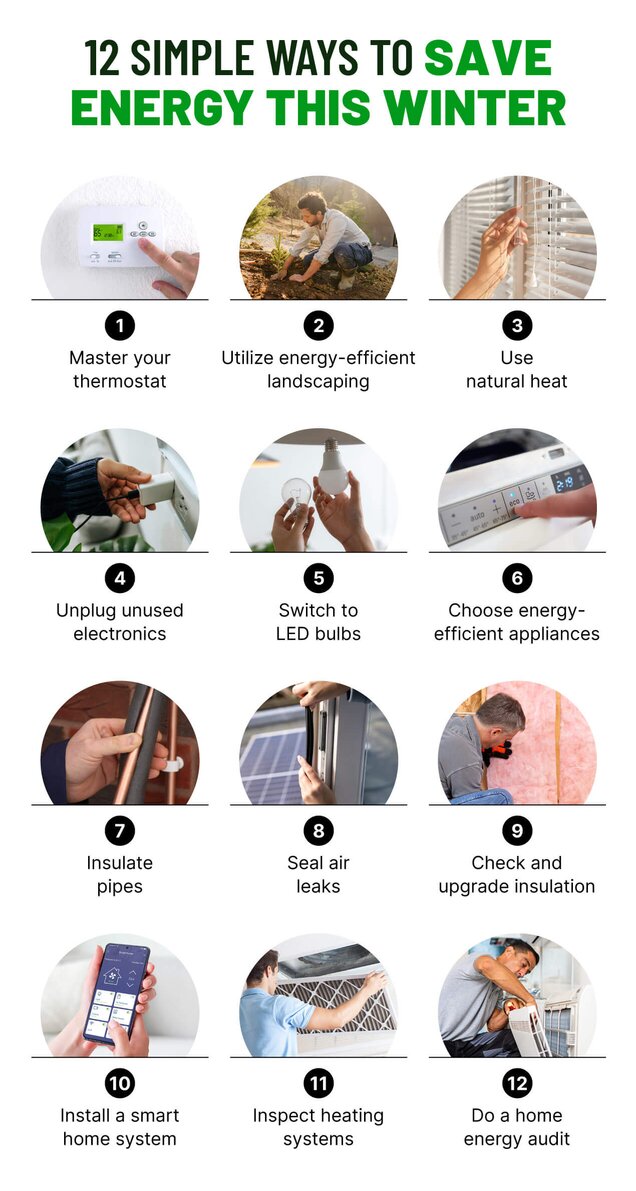
5. Check and upgrade wall insulation
Why? Insulation helps maintain consistent temperatures and prevents heat from escaping. Insufficient insulation forces your heating system to work harder, wasting energy.
This results in higher energy bills and unnecessary strain on your HVAC system. Checking and upgrading your wall insulation ensures your home remains energy-efficient and comfortable, helping you save on your energy bill in the long run.
Many insulation improvements are DIY-friendly projects for homeowners, allowing you to tackle some projects yourself and save on labor costs.
Effort required: Medium
Steps to take:
-
Inspect the insulation in areas like your attic, walls, floors, and crawl spaces for any gaps or thin spots that could compromise efficiency.
- Seal gaps around windows, doors, and ducts with caulk, foam sealant, or weatherstripping to keep warm air inside.
- Add extra insulation to critical areas such as the attic and basement to prevent heat loss and reduce the load on your heating system.
- Upgrade to higher-efficiency insulation materials (like spray foam or rigid foam board) in spaces that need stronger insulation for better protection.
6. Install a smart home system
Why? A well-configured smart home system optimizes your home’s energy use by automating routine tasks and adjusting systems like heating, lighting, and appliances based on your specific needs.
Smart home devices help you control your home’s energy consumption, reduce the risk of overuse, and allow systems to run efficiently without unnecessary strain.
Effort required: Medium
Steps to take:
-
Upgrade to a smart thermostat to ensure your home stays at an optimal temperature, reducing strain on your HVAC system and cutting energy waste when you’re not home.
- Set up smart lighting to automatically turn off or dim when not needed, reducing excess energy use and avoiding unnecessary replacements due to overuse.
- Incorporate smart power strips to cut power to devices when not in use, preventing energy waste from electronics left on standby.
- Optimize your water heater settings with a smart system that adjusts the temperature based on your usage patterns, reducing unnecessary energy consumption and water heating costs.
7. Upgrade to energy-efficient appliances
Why? Upgrading to energy-efficient appliances saves on energy costs and helps prevent unexpected breakdowns. These appliances often have advanced features that reduce wear and tear, minimizing the risk of malfunctions and costly repairs.
ENERGY STAR-rated appliances are designed for reliability, using less energy and conserving resources while keeping your home comfortable.
Effort required: Low to medium
Steps to take:
-
Replace old appliances with ENERGY STAR-certified models to boost efficiency, cut costs, and reduce breakdowns.
- Look for appliances with safety features like automatic shut-offs, energy-saving modes, or overheat protection to prevent malfunctions.
- Regularly clean and replace filters in your appliances, like your refrigerator and washing machine, to prevent breakdowns and maintain efficiency.
- Consider smaller, energy-efficient alternatives for high-use appliances like space heaters or portable air conditioners to lower overall energy consumption.
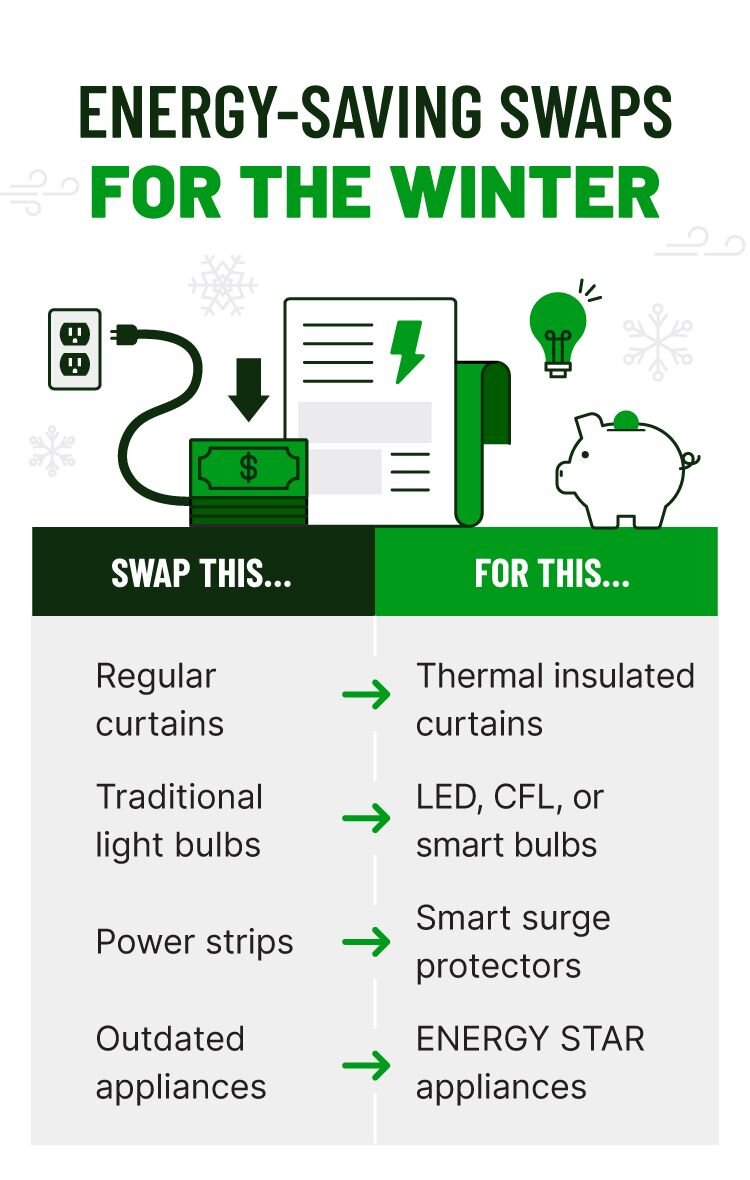
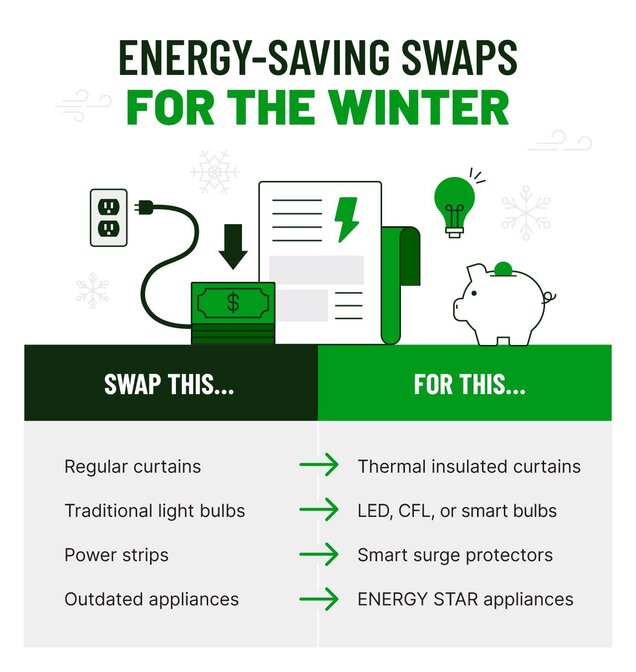
8. Unplug unused electronics
- Set electrical devices to low-power or power-saving mode to reduce energy consumption when they’re not in use.
- Disconnect devices, especially when you're away for extended periods, to stop unnecessary energy consumption and reduce fire risk.
- Look for devices with lights, displays, or clocks that remain on even when powered down (e.g., TVs, printers, phone chargers). These devices can silently drain power.
9. Master your thermostat
- Keeping your thermostat a few degrees lower than normal when you’re asleep or out of the house—around 7°F to 10°F lower than your usual temperature—can help save energy while protecting your home.
- Place your thermostat on an interior wall, away from direct sunlight, drafts, doorways, skylights, and windows, to allow for accurate readings and efficient operation.
- Consider using a small space heater if you only need to heat part of your home, but remember to follow all safety instructions.
- Have ceiling fans rotate clockwise at low speed to pull cool air up, redistribute warm air, and reduce drafts.
10. Switch to energy-efficient lightbulbs
- Replace incandescent and CFL bulbs with energy-efficient LED bulbs to reduce energy consumption and cut costs.
- Install smart bulbs that allow you to control lighting remotely, set schedules, and adjust brightness to save even more energy.
- Turn off lights when you’re not using them to avoid unnecessary energy drain.
11. Use natural sunlight for heating
- Open curtains and blinds during the day to let in sunlight and naturally warm your home.
- Close curtains or blinds at night to help insulate heat. Windows can account for as much as 30% of a home’s heat loss in winter.
- Invest in thermally insulated curtains to further improve insulation and reduce heat loss.
12. Utilize energy-efficient landscaping
- Plant evergreen trees or shrubs on the north and west sides of your home to block cold winter winds.
- Trim vegetation around windows and doors to maximize sunlight and naturally warm your home.
- Create windbreaks by strategically placing bushes or trees in areas most exposed to the wind, reducing heat loss around your home.
Maximize your home’s efficiency this winter with our downloadable checklist
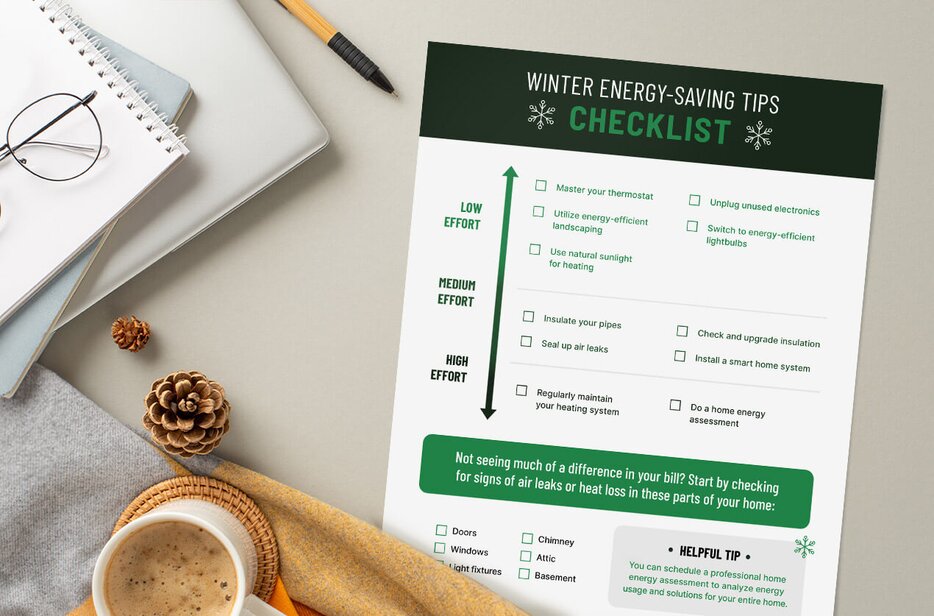
Related Articles

Winter Home Maintenance Checklist for a Cozy Home in 2024

How to Prevent Winter Weather Damage

Go Green to Spend Less Green: 12 Electricity Apps to Track Your Usage

Spring Home Maintenance Checklist To Prep for 2024 Spring Weather
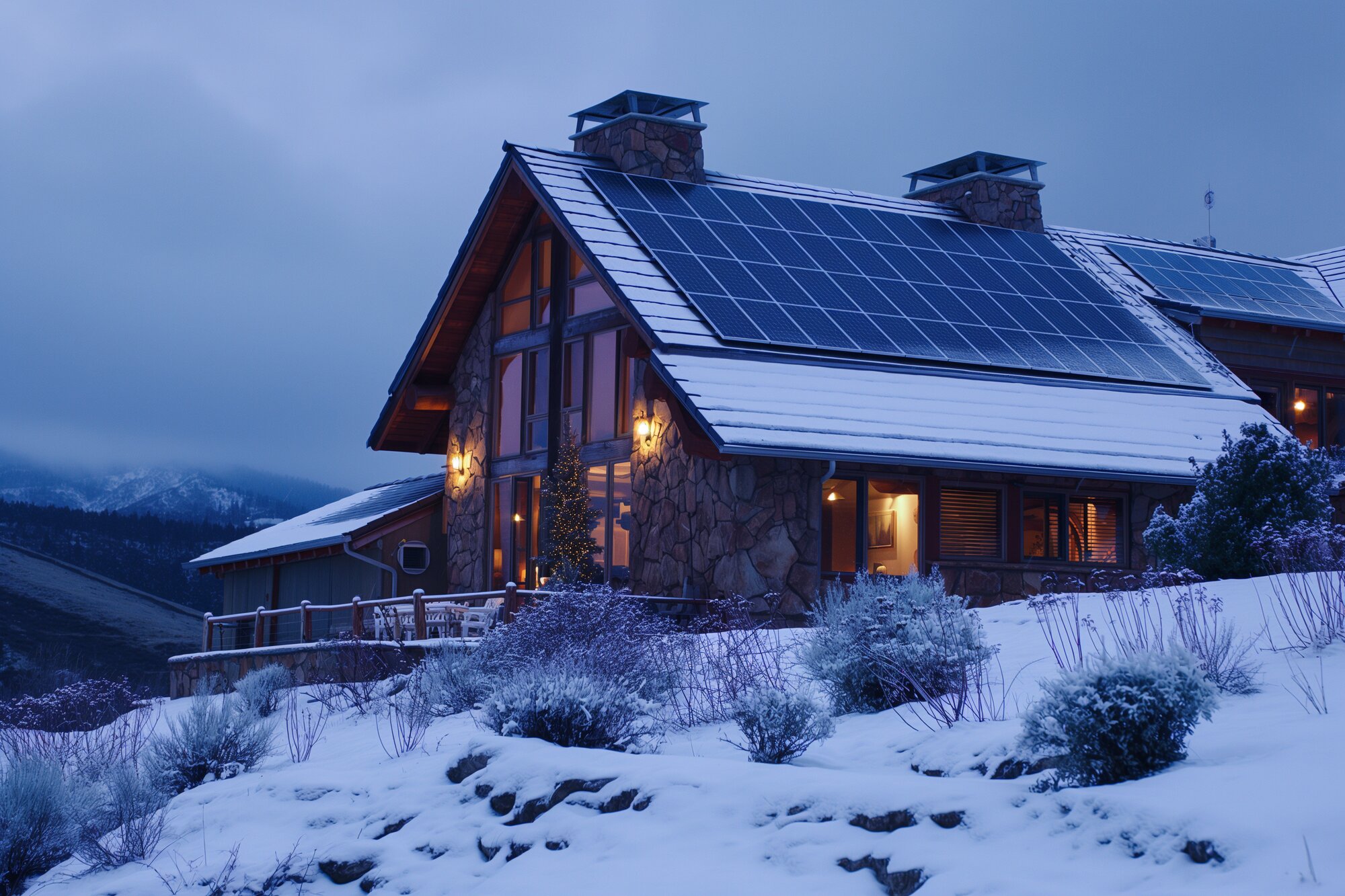
Building for the Future: How Residential Construction is Adapting to Weather and Climate Change

